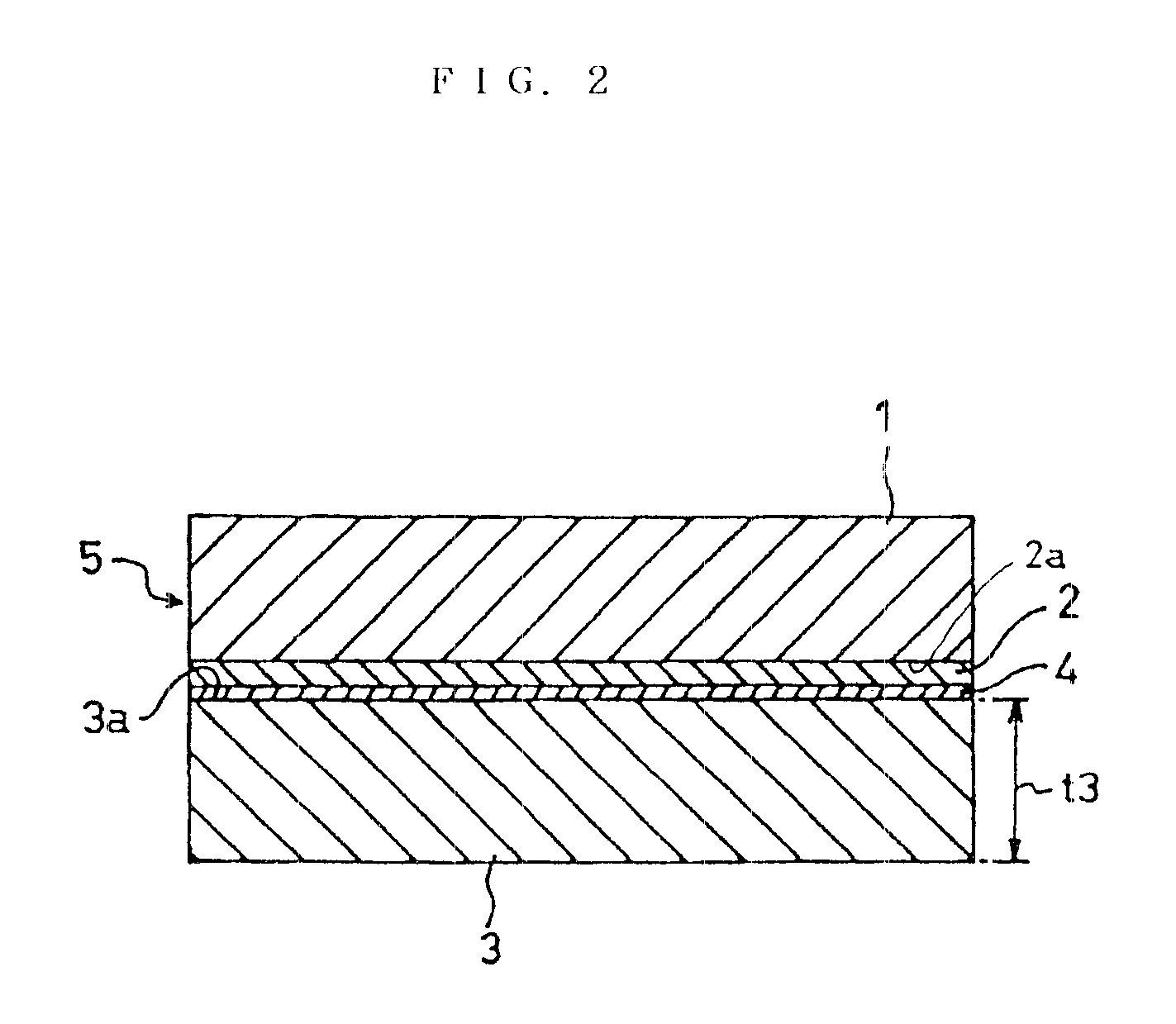Single crystal SiC composite material for producing a semiconductor device, and a method of producing the same
a composite material and single crystal technology, applied in the direction of polycrystalline material growth, silicon compounds, gel state, etc., can solve the problems of unstable substrate, easy warpage or deformation of semiconductor devices, and difficult to ensure thickness and strength which are requested
- Summary
- Abstract
- Description
- Claims
- Application Information
AI Technical Summary
Benefits of technology
Problems solved by technology
Method used
Image
Examples
Embodiment Construction
Hereinafter, an embodiment of the invention will be described with reference to the drawings.
FIGS. 1 to 4 are views illustrating the results of steps of the method of producing such a single crystal SiC composite material for producing a semiconductor device of the invention. In a first step, the results of which are shown in FIG. 1, a single crystal SiC film 2 in which the thickness t2 is about 1 .mu.m is formed by the heteroepitaxial growth method on a single crystal Si substrate 1 in which the thickness t1 is about 0.5 cm.
In a second step, the results of which are shown in FIG. 2, the single crystal SiC film 2 which is formed on the Si substrate 1 is then stacked via a film-like SiO.sub.2 layer 4 in a closely contacted manner onto a mirror-polished surface 3a of a polycrystalline plate 3 which is formed by the thermal CVD method into a flat plate-like shape having a thickness t3 of about 0.7 cm. As the SiO.sub.2 layer 4, any one of a member which is formed by applying SiO.sub.2 p...
PUM
 Login to View More
Login to View More Abstract
Description
Claims
Application Information
 Login to View More
Login to View More - R&D
- Intellectual Property
- Life Sciences
- Materials
- Tech Scout
- Unparalleled Data Quality
- Higher Quality Content
- 60% Fewer Hallucinations
Browse by: Latest US Patents, China's latest patents, Technical Efficacy Thesaurus, Application Domain, Technology Topic, Popular Technical Reports.
© 2025 PatSnap. All rights reserved.Legal|Privacy policy|Modern Slavery Act Transparency Statement|Sitemap|About US| Contact US: help@patsnap.com



